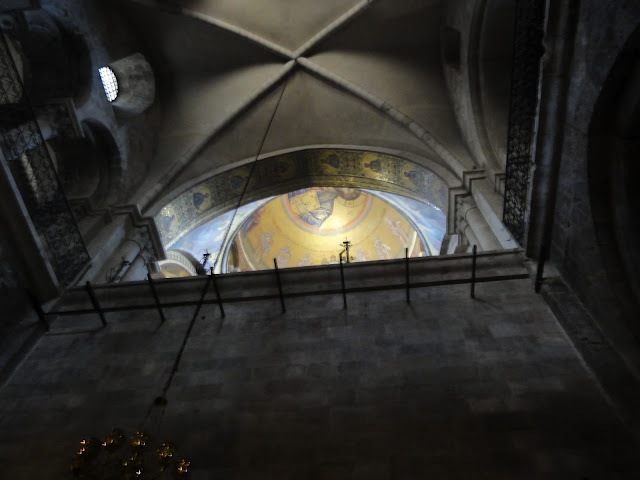Remember the Jordan River?
 |
| The River Jordan, near where Christ was baptized. |
Up north, near Tel Dan, this is the Jordan.
 |
| Jordan River. This is the way I wanted it to look. |
The Jordan is fed by three sources, one of them at Banias Spring. Banias comes from Paneas, for the god Pan. The place was an ancient Greco-Roman city before we read of it as Caesarea Philippi in the New Testament.
 |
| Banias Spring, one of the sources of the Jordan. Brian and Ann Johnson are in the picture, too. |
 |
| Banias Spring, Caesarea Philippi |
 |
| It's a lovely spot. The Brett Johnson family relaxes by the water. |
 |
| Water used to gush out of the cave. Now it's not a gush but a stream. |
Matthew 16 (and Mark 8) tells of Christ's visit to Caesarea Philippi with the twelve. This is where he asks them who other people say he is. They answer. He then asks who they say he is. Peter bears testimony that Christ is the son of God. Then Christ says, among other things, "Blessed art thou Simon [Peter]" and later that he will give Peter the keys of the kingdom.
This is an important time for these men. Christ is preparing them to carry off the kingdom. They don't quite get the picture yet. I say it because when He tells them all he must go to Jerusalem and he will be killed, Peter can't accept it.
"Then Peter took him, and began to rebuke him, saying, Be it far from thee, Lord; this shall not be unto thee. (Mattew 16:22)
"But he turned, and said unto Peter, Get thee behind me, Satan; thou art an offense unto me; for thou savourest not the things that be of God, but those that be of men." (16:23)
Striking contrast.
Caesarea Philippi is at the base of Mount Hermon, which is believed to be the mount of transfiguration. You can read Matthew 17 about the transfiguration. You will note that Peter was there, of course, with the Lord.




















